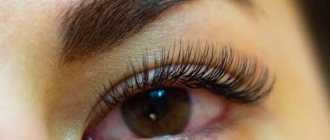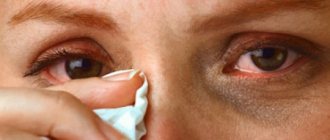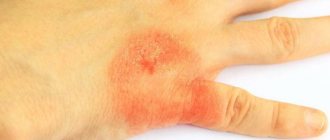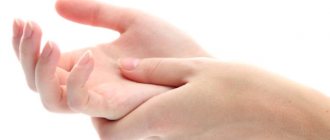An allergy to eyelash extensions is an acute reaction of the body to the glue or polymer microfiber from which artificial eyelashes are made.
Allergies caused by eyelash extensions are extremely rare (less than 1% of confirmed cases of all complaints about various reactions after the procedure). The remaining 99% are the consequences of technology violations. We will tell you everything that is important to know about allergies, their differences from the results of the unprofessionalism of the master. In addition, we will advise how to avoid such “side effects” and what to do if unpleasant consequences do arise.
How might the reaction manifest itself?
Allergies sometimes do not occur immediately after the procedure. This happens after a couple of minutes or after several hours. By what symptoms can you identify it?
- Redness appears on the skin of the eyelids, the eyes become swollen, and there may be swelling that spreads to the entire upper part of the face.
- The color of the white of the eye changes and becomes light pink, which is due to damage to small capillaries.
- The mucous membranes become very dry, and there is a feeling that something has gotten into the eye.
- Severe itching and burning occurs along the eyelash line, which over time can spread throughout the entire eyelid.
- Symptoms of rhinitis may appear: nasal congestion, mucus discharge.
- Sometimes the temperature rises and a dry cough bothers you.
If an allergic reaction occurs to eyelash extensions, it is in no case accompanied by painful sensations. Pain is a sign that the work was performed poorly; the master damaged the mucous membrane of the eye during the procedure.
Why do allergies occur?
An experienced master who is worried about his reputation will not allow his client to remain dissatisfied
If eyelash extensions were applied correctly with precautions, you should get good results without any side effects.
But allergies are not always the result of a specialist’s mistake; sometimes the occurrence of its symptoms is associated with the individual characteristics of the body. Here is a list of the main reasons:
- genetic predisposition;
- increased sensitivity of the skin;
- use of cheap adhesive;
- Application for extension of hairs of artificial origin or insufficiently processed eyelashes.

To protect yourself from unpleasant experiences after extensions, do not trust inexperienced professionals who work at home. Make an appointment with a professional at a beauty salon. In this case, the service will cost a little more, but you can be sure of safety and quality.
Before carrying out the procedure, ask what materials and tools are used. Expensive, high-quality adhesives and natural hairs treated with antiseptics rarely cause allergies to eyelash extensions. But if budgetary funds are used, the human immune system reacts to their components, perceiving them as foreign proteins.
Precautionary measures
In beauty salons, professional products that contain virtually no allergens are used to perform eyelash extension procedures. The client is given natural, pre-treated hair, so the risk is extremely low. Each master has his own statistics of cases where women showed signs of allergies after extensions. On average, this is 1%, that is, one client out of 100 had problems after the session.

Cosmetologists, based on their experience, have developed a set of rules and recommendations with which you can protect yourself from unpleasant manifestations.
- If symptoms have already occurred once, you should not agree to eyelash extensions again.
- Before making eyelashes, ask the specialist to test the composition on the skin (apply a little product to the bend of the elbow). The absence of allergies indicates that eyelash extensions can be done.
- A hood must be installed in the room to allow air exchange.
- A normal level of humidity must be maintained in the cosmetologist's office. The air must not be too dry. For this purpose, special humidifiers are used.
- If you often have allergies to various compounds, ask your cosmetologist to use hypoallergenic glue when performing the procedure.
- All instruments must be thoroughly disinfected, and when gluing eyelashes, the master must be careful not to damage the delicate skin of the eyelid or the mucous membrane of the client’s eye.
- The work must be performed with sterile gloves. You should also wear a medical mask not only for the specialist, but also for the client to prevent volatile substances from entering the respiratory tract.

How to distinguish an allergic reaction from the consequences of poor quality work by a cosmetologist?
The following signs indicate that the extension procedure itself was carried out incorrectly:
- Allergy medications do not help relieve discomfort;
- there is a sharp pain in the eyes, they are very irritated;
- even after removing artificial eyelashes, unpleasant symptoms persist;
- The eyelids swell greatly.
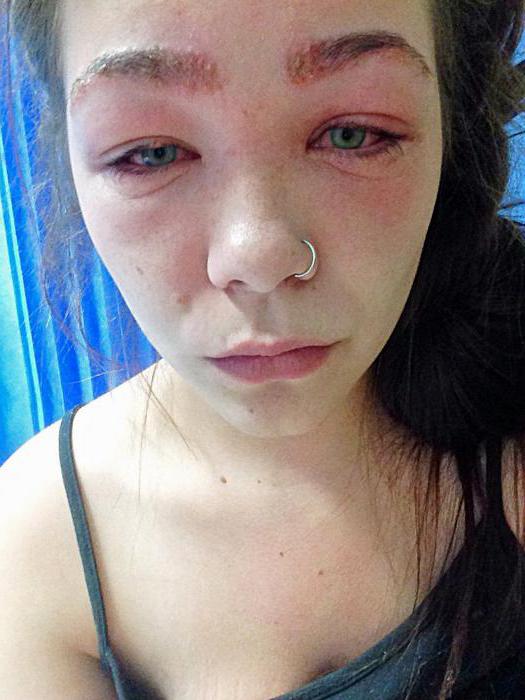
Such phenomena can also occur if a woman is not allergic to eyelash extensions or glue. Most often, this reaction is caused by improper eye care after the procedure (if a client who has had extensions done does not wash her face, pathogenic microbes can multiply in the eyes and on the eyelashes), as well as damage to the mucous membrane of the eye. In such cases, you should consult a doctor as soon as possible.
Allergy to eyelash extensions: does beauty require victims?
What causes allergies during eyelash extensions? What are the symptoms of intolerance to the procedure?
Why does intolerance occur? How to deal with its consequences and prevent their reappearance?
The beauty industry does not stand still, it is developing, offering fashionistas more and more fresh methods to decorate themselves. This is not always a safe process, especially if chemical compounds and chemicals are involved in one or another procedure. An example of the development of a reaction of this kind is an allergy to eyelash extensions, which can sometimes be extremely difficult to get rid of, even after removing the eyelashes.
Symptoms
An allergy to eyelash extensions can appear immediately after the procedure or after some time.
Traditionally, this is a short period. It ranges from a couple of minutes to a couple of hours (rarely). The reaction manifests itself as follows:
- Redness of the eyelids, sometimes accompanied by swelling. Occurs immediately after the procedure;
- Change in the color of the white of the eye. It becomes pinkish, blood vessels quickly begin to burst;
- Feeling of dry mucous membranes, foreign body in the eye;
- Swelling of the eyelids. With severe allergies, it can spread to the entire upper part of the face;
- The appearance of severe itching and burning in the area of the extension, i.e. along the eyelash contour.
Over time, it can spread to all eyelids;
- Eyes water;
- There are signs of allergic rhinitis - mucus is discharged from the nose. Over time, sneezing becomes more frequent;
- Sometimes a spasmodic cough and hyperthermia occur.
It is important to remember that there is no pain with such manifestations. If pain occurs, then we are talking about damage to the mucous membranes that occurred during the procedure
Causes
Allergies to eyelash extensions occur quite rarely. But different masters have different statistics on this matter.
On average, the reaction occurs in one client from one client to another. Directly, the frequency of occurrence of the reaction depends on the property used by the master and his professionalism.
Expensive premium formulations cause the opposite phenomenon much less often than economical products. If the client has a tendency to allergies, then it is better to ask in advance how the master uses high-quality compounds.
The most common allergies are to eyelash glue or certain auxiliary products. The hairs themselves cause intolerance very rarely. Natural hairs are perfectly treated with disinfectants and other compounds, so they do not cause a reaction.
If it occurs, it is only on synthetic eyelashes due to intolerance to the synthetic component.
The body's immune system recognizes low-quality glue for eyelash extensions as a foreign protein.
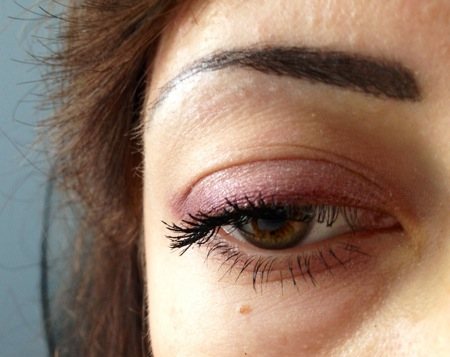
She rejects him and eventually develops allergic antibodies. The usual allergy symptoms listed above occur.
How to fight?
Although the symptoms of such allergies are extremely unpleasant, they often do not pose a threat to health. For some clients, symptoms disappear after a single dose of an antihistamine. They don't even have to remove their eyelashes.
But there are also the most severe cases. It is important to know what to do when the reaction is powerful and causes discomfort.
- Visit a professional again and have your eyelashes removed;
- Visit an allergist to prescribe treatment;
- In some cases, you need to visit an ophthalmologist, since
infectious conjunctivitis is often added to allergic conjunctivitis.
In cases of severe intolerance, lengthy treatment may be required from both an allergist and an ophthalmologist. It is impossible to self-medicate in such cases.
How to prevent it?
When doing extensions, professionals use one of two types of glue:
Allergies to dark-colored eyelash glue occur much more often. It contains a dye that acts as an additional allergent. Therefore, if there is a common intolerance to a food product or chemical composition, it is better to use a transparent substance to attach hairs.
But it is better to test this glue in advance.
You can apply it to the crook of your elbow and see if a skin reaction occurs. But this is not always a reliable result, because the skin on the eyelids is more delicate. You can ask a professional to apply a drop of glue to the eyelid near the lash line and wait 24 hours. If there is no reaction, then the eyelashes can be glued on.
You cannot enlarge eyelashes if you have acquired or acute conjunctivitis (allergic or infectious).
The eyelash line itches. Eyelash diseases, their causes
With age, the quality and quantity of eyelashes change, as does the condition of a person's skin. This is one side of the issue. Many women of any age, not without reason, are concerned about the problems of improper eyelash growth, when they grow into the upper eyelid, hairs begin to fall out, pimples appear on the eyelid under the eyelashes, or for some reason the eyelashes around the eyes itch.
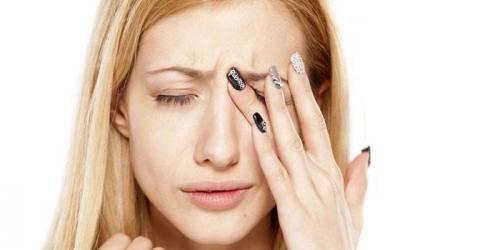
Eyelashes itch
If such symptoms appear, the reasons may be interconnected, and a serious illness lies behind them. You shouldn’t diagnose yourself and decide how to treat your eyelashes. The disease can only get worse. You cannot do without medical advice. You should consult your family doctor, dermatologist or ophthalmologist. Some symptoms of the disease:
- Eyelashes itch. The most common reason why they can not only itch, but also cause redness, rash and tearing, is an allergic reaction to the flowering of plants in early spring, as well as to low-quality or expired eyelash cosmetics. The delicate skin of the eyelids can itch due to sudden temperature changes. Both heat and cold can cause itching.
- The upper eyelid in the eyelash area itches. This may be an inflammatory process caused by many diseases. Provocateurs include allergies, fungi, and weakened immunity. The eyelid may itch when infected with the demodex scabies mite. It affects the hair follicle of the eyelash. This disease is classified as demodicosis. The eyelid may itch from the ever-present herpes, a viral disease characterized by a rash of watery blisters and bumps on the eyelids, causing itching in the eyelash area. As a result, the eyelid begins to hurt and peel.
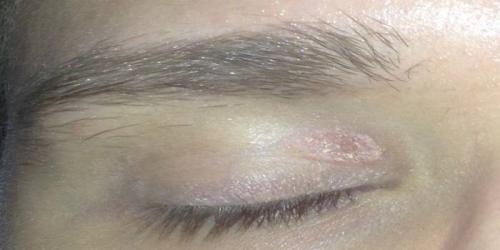
Herpes on the upper eyelid
- A pimple appeared on the upper eyelid under the eyelashes. Usually this is a stye, which is a purulent formation on the eyelid. It develops either in the hair follicle or in the sebaceous gland on the eyelash margin. The pimple begins to turn red, swell and itch. The itching continues for several days.
- Eyelashes grow incorrectly. What to do if eyelashes grow incorrectly inside the eye? This may seem like an annoying little thing that can be corrected with mascara, but for many girls this common defect spoils not only their appearance, but also their mood. What about proper eyelash growth? These are even eyelashes that curl slightly upward and are positioned correctly relative to each other. In some cases, abnormal eyelash growth develops into an ophthalmological disease - trichiasis. It is caused by conjunctivitis, various infections and inflammations. As a result, the delicate skin of the eyelids and the eyelash hair follicles located in it suffer.
- An eyelash has grown into the upper eyelid, what should you do in this case? Cosmetologists explain that the structure of the pilosebaceous follicle contains a muscle that lifts the hair. If it is weak or absent, and the mouth of the follicle is deformed, the hair grows chaotically, including growing into the eyelid. Experts do not recommend pulling out improperly growing hairs, so as not to damage neighboring bulbs. If there are a lot of such hairs, they need to be removed in a cosmetology office. After their removal, the woman is given recommendations on how to properly care for her eyelashes in order to avoid improper eyelash growth in the future.
- Dandruff appeared on the eyelashes. One of the worrying factors may be the appearance of dandruff on the eyelashes. These are white scales that peel off from the surface of the hairs. Such peeling may be a symptom of an inflammatory process, such as conjunctivitis. The eye begins to water, and a viscous white or yellowish liquid accumulates in the corner. After a night's sleep, the eyes stick together due to dried discharge that looks like scales.
Treatment of swelling after eyelash extensions
Therapy for edema is prescribed only by an ophthalmologist; the following drugs are most effective:
- The body's toxic-allergic reaction to an irritant can be relieved by Opatanol drops. You need to put 1-2 drops in your eyes 2-3 times a day for a week.
- Dexamethasone drops, which have anti-inflammatory and antiallergic properties, help well, but they are recommended to be used only in consultation with a specialist and strictly in accordance with the instructions.
- Polynadim drops can cope with allergic and infectious edema; they should be used 3 times a day for 7-10 days.
- Antibacterial drops Ofloxacin or Oftaquix can quickly and effectively combat the infection; it is recommended to instill swollen eyes 4 times a day. Before going to bed, lubricate the eyelids with Floxal eye ointment, continue treatment for at least 7 days. To improve the effect, rinse your eyes with furatsilin (2 tablets per 250 ml of water) 3-4 times a day.
- If the eyelids are swollen enough, a burning sensation and itching appear in combination with the antihistamines Polinadim, Lecrolin, Hydrocortisone eye ointment is used. Treatment should be carried out for at least 5 days.
When using two types of drugs in therapy, a break of 30 minutes should be taken between them.
Treatment with folk remedies
To speed up the healing process, you can supplement treatment with alternative medicine recipes:
- If your eyelids are swollen from eyelash extensions, you need to make juice from fresh potatoes, moisten cotton pads, and gently apply to the inflamed eyelids for 5-7 minutes. After this, lubricate the eyelids with nourishing cream.
- Apply fresh cucumber gruel to swollen eyelids, repeat the procedure 3 times a day for 7 minutes. This will help you quickly and effectively cope with swelling.
- Brewing strong tea will help with swelling after extensions; you need to do compresses 4-5 times a day.
- A mixture of chamomile flowers and oak bark, one tablespoon each, brew with boiling water, leave, let cool. Make ice cubes from the broth, wrap them in a cotton towel and wipe the inflamed eyelids 4 times a day.
- A decoction of mint and lemon balm (1 tablespoon each) will help effectively eliminate swelling and irritation.
- Apply a mixture of chopped parsley leaves and sour cream in 1:2 parts for 15 minutes. This stimulates regeneration, helps fight swelling, moisturizes and nourishes the affected area.
- Chopped carrots and parsley root are thoroughly mixed, and the paste is applied for 15 minutes.

All recipes speed up the recovery process, stimulate regeneration and relieve painful symptoms.
Treatment of swelling after extensions
If a woman has extended artificial eyelashes and her eyelids are swollen, she needs to consult an ophthalmologist. The specialist will find out the causes of the problem and prescribe treatment.
Mild allergies can be treated at home. The rule of recovery is compliance with medical recommendations, dosage, frequency of taking prescribed medications, and the correct ratio of herbal ingredients in the recipe. There are different approaches to treating swollen eyelids.
Medication
- Opatanol drops containing olopatadine. The active substance has a pronounced anti-edematous effect. Prevents the release of histamine, which is responsible for the development of an allergic reaction. The number of cytokines decreases, unpleasant symptoms disappear. The drug is instilled into the conjunctival sac, 1 drop twice a day. Opatanol for swelling is used in combination with symptomatic ointments for faster results.
- Dexamethasone drops are a hormonal drug. Fights inflammatory, exudative, allergic phenomena. Helps stabilize the condition of mast cells. Prevents the penetration of foreign agents and liquids through capillaries. Use 2 times a day, no more than 3-5 days.
- Polynadim - consists of two active ingredients. Diphenhydramine blocks H1-histamine receptors, reduces the manifestation of allergy symptoms - swelling, itching, lacrimation. Naphazoline reduces swelling by constricting blood vessels. The drug is used every 3 hours until improvement. The combined drug copes with the disease faster than single-component drugs.
- Erius is a popular tablet for allergic reactions on the eyelids, an antihistamine of the latest generation. Rarely causes side effects, and can easily cope with allergies after extensions. Erius stops the reactions that are responsible for the development of inflammation.
- Tavegil, Suprastin - administered intramuscularly for emergency treatment of allergic, pseudoallergic reactions.
- Antibacterial drops and ointments - to prevent bacterial infection of the eyes. Ofloxacin drops, streptomycin, erythromycin ointment. The use of local antimicrobial agents must be discussed with your doctor to avoid consequences.
- Hydrocortisone ointment can be placed under the swollen lower eyelid. It acts in a similar way to Dexamethasone. A few hours after applying the ointment, allergy symptoms disappear. 1-2 days are enough for recovery.
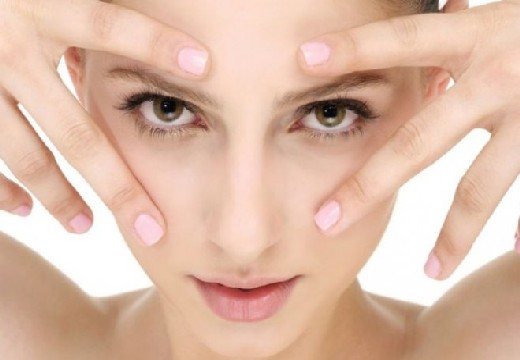
Folk remedies
Potato juice relieves swelling. Cotton pads must be moistened in a freshly prepared product and applied to the eyelids if they are swollen. After 10 minutes, remove the cotton wool. Lubricate the skin around the eyes with nourishing cream.
In the summer, cucumber gruel will get rid of the tumor. Apply for 5 minutes to both eyes up to 10 times a day. Brewing black or green tea will cope with swelling. Compresses should be applied for 10 minutes 7-10 times a day.
It is recommended to drink half a glass of infusion of chamomile and oak bark for allergies. The infusion can be frozen into cubes and applied through a towel to the affected area.
Similar actions are done with mint and lemon balm. Take a tablespoon of each herb and pour boiling water over it. The infused mixture should be drunk a glass 2 times a day. You can make frozen cubes from the broth.
For swollen eyelids, a recipe with parsley and sour cream will help. You will need 2 tbsp. l. dairy product, 1 tbsp. l crushed leaves. Mix the ingredients thoroughly and make a mask for the area around the eyes. Leave the product for 15 minutes, rinse with warm water.
Traditional methods relieve puffiness after extensions and restore freshness to the skin.
Symptoms
Allergic reaction on eyelids
According to a 2020 study, the most common complication associated with eyelash extensions was allergic blepharitis. A person with allergic blepharitis may experience:
- skin peeling
- irritation
- redness
- itching
- swelling
Allergic reaction to the eyes
Allergic reactions in the eyes can cause various symptoms, such as:
- redness
- irritation
- itching
- teary eyes
An allergic reaction may result from direct contact with the adhesive, or it may be caused by adhesive fumes.
Recommendations for treating allergies
- First of all, for unpleasant sensations: pain in the eyes, increased lacrimation, etc. you need to get rid of artificial eyelashes. You cannot make sudden movements and tear them off yourself. Your own eyelashes may also be removed along with them. Eyelashes are removed using special solutions, and it is best to go to a cosmetology office for this.
- If it is difficult to contact specialists, fatty creams or oil are applied to the surface of the adhesive base. After 2-3 minutes, a light massage of the eyelid area is performed. Subsequently, the eyelashes can be easily removed.
- Next, the eye area is washed with a decoction of chamomile. In case of complications, no cosmetics should be applied to the eyes until the woman consults with a doctor.
In severe cases, drug therapy is prescribed
prescribing antihistamines to relieve swelling and itching. Tavegil, Loratadine, Suprastin, etc. are most often prescribed orally.
It is important to note that when using first-generation drugs (Diphenhydramine, Suprastin), side symptoms may develop, which manifest themselves in increased drowsiness and lethargy. These factors should be considered when prescribing drug treatment
As a rule, after oral administration of antihistamines, allergic symptoms are quickly neutralized; You can relieve irritation in the eye area with drops (Vitabact, Okomistin, Opatanol);
- The use of sympathomimetic drugs (Vizin), which relieve allergic symptoms in the eyes, shows good effectiveness. These drops are also indicated for injuries to the mucous membranes of the eye and eyelids;
- secondary infection is prevented by the use of drops containing antibiotics. These include Levomycetin and Albucid.
It must be remembered that before any cosmetic intervention, a girl must undergo a full medical examination for the presence of acute and chronic diseases. Only after a doctor’s conclusion can you begin the necessary procedures.
All women of any age want their eyes to be bright and beautiful, so that their gaze is mysterious and languid. To do this, women buy thickening mascara, tattoo the eyelash contour, and use false eyelashes. Sometimes women decide to get eyelash extensions without even realizing that they may have an allergy.
What to do if you have an allergy
The appearance of a reaction is not always a reason to remove artificial eyelashes. Antihistamines sometimes help get rid of unpleasant symptoms. Are allergy symptoms severe and do not go away after taking the medicine? Eyelashes must be removed using a special product (remover). If the reaction does not stop and even gains momentum, medical attention will be needed.
After removing artificial eyelashes, you will have to limit the use of decorative cosmetics in the eye area - the skin and mucous membranes are irritated by the allergen and are susceptible to inflammatory processes. 5-10 days are enough for full recovery.
Is your goal to have an expressive and deep look without any negative consequences? Trust eyelash extensions to specialists who do not allow themselves to work with low-quality materials and ignore the health safety of clients.
Article Rating
What are the consequences of eye irritation after extensions?
Irritation of the organs of vision and redness after extensions is not always the fault of the cosmetologist. Occurs due to an allergy to the glue or material from which the eyelashes are made. Due to the fact that the client opened her eyelids without the cosmetologist’s permission, she washed her face within 24 hours after the session. You cannot touch or rub your hair, visit swimming pools, saunas, or use decorative cosmetics.
Irritation and redness of the eyes after artificial eyelash extensions can lead to complications if the symptoms are not eliminated with the help of medications and traditional methods.
Consequences:
- Development of diseases of the organs of vision (purulent infections, conjunctivitis, dacryocystitis, blepharitis).
- Corneal burn.
- Chemical burn (occurs if the eyelids are not washed after glue gets on their mucous membranes).
- Loss of vision (occurs when bimatoprost, a component found in some adhesives, gets into the eye).
You can avoid the development of consequences by immediately contacting an ophthalmologist in case of decreased visual acuity, swelling of the eyelids with liquid contents inside, pus accumulated in the corners, excessive redness, burst blood vessels.
Many people know that after artificial eyelash extensions are applied, especially if this is done frequently and continuously, the natural hairs become thin and weakened and fall out more often. To prevent this from happening, you need to use high-quality products when doing eyelash extensions, carry out eyelash correction on time and put yourself in the hands of professionals.
To avoid causing allergies or deterioration, eyelash extensions should be adjusted monthly. After a year they must be removed. After each extension cycle, you should give your natural eyelashes a rest to allow them to recover. During this period, they need to be strengthened with vitamins and nutritional components.
You should not resort to this procedure if contact lenses are inserted. In this case, by the evening the eyes become irritated, red and tired. All of these factors can reduce vision over time.
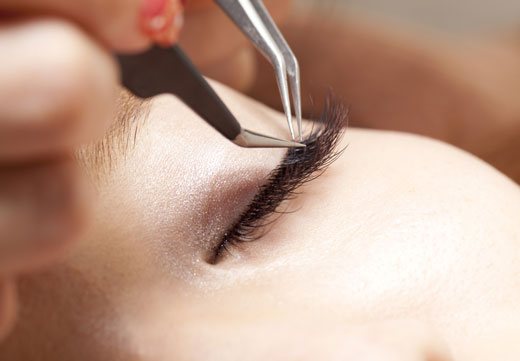
How to get rid of symptoms?
Of course, such phenomena come as an extremely unpleasant surprise. Naturally, a woman is concerned about the question: if there is an allergy to eyelash extensions, what to do in this case?
When such signs appear, first of all, it is necessary to remove the artificial hairs. It is better if this is done by a beauty salon specialist using a special solution. At home, you can remove eyelash extensions using cream or oil. They must be removed carefully, without sudden movements. After removing artificial eyelashes, it is recommended to rinse your eyes with chamomile infusion. Then you need to consult a specialist about taking medications.
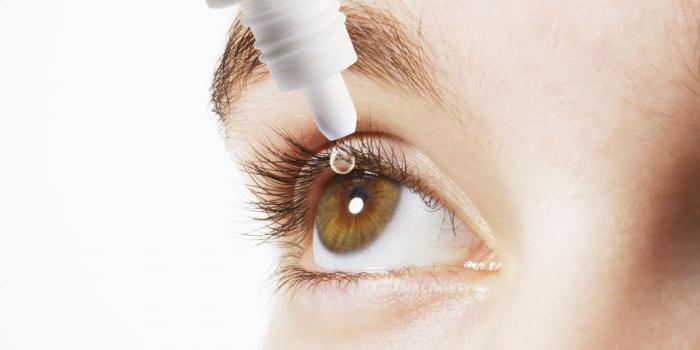
Eyelash extensions
Good morning!
I have a question, yesterday I extended my eyelashes with silk and hyperallergenic glue, everything was fine. I went to bed and in the morning there was itching, redness and a large tumor on the lower and upper eyelids. Please recommend any medications, I really don’t want to take them off.
Sveta | Yoshkar-Ola | age: 22
Answer: Hello, Svetlana.
You need to see the specialist from whom you had eyelash extensions done so that she (he) can assess the situation. Maybe the eyelashes were extended extremely close to the eyelid, they can cause irritation. Or you have a personal intolerance to the components used in extensions. If the symptoms do not go away, you need to remove the eyelashes and consult an ophthalmologist and allergist.
Question No. | Topic: Eyelash Extensions |
Good afternoon
Yesterday I got eyelash extensions, during the extension procedure, almost after the first drop of glue hit the eyelashes, a burning sensation began.. the technician said that the glue was hypoallergenic and she couldn’t have allergies.. plus the stickers on the lower eyelid touched the whites and there was a nasty feeling.. after the procedure, the eyes were reddish and watery. Now during the day, both eyeballs are red, and in one eye, on the white of the eye from the pupil to the lower eyelid, the blood vessels are extremely swollen and there is just a reddish spot. There is no particular pain, but the feeling is extremely unpleasant... and my vision has dropped sharply (I look into the distance and can’t make out anything and my eyes are watering.
I went to the pharmacy, they recommended that I drip thiotriozoline, I drip, but there is no particular improvement.. Tomorrow I’m going to the seaside and there’s no time to go to the doctor.. tell me what to do and what first aid I can provide for myself if at sea (away from doctors ) things will get worse. Thank you very much in advance for your answer.
Katerina | Ukraine, Dnepropetrovsk | age: 23
Answer: Hello, Katerina.
It is possible that during the eyelash extension procedure there was microtrauma to the mucous membrane of the eye, which is why you are experiencing redness. Also, redness and inflammation of the mucous membrane could occur due to glue fumes.
If this is a microtrauma of the mucous membrane, then it is best to use drugs that promote healing. The result does not always come quickly, sometimes it takes several days. Naturally, it is better to seek advice from a doctor, as well as from the specialist who did the extensions. If you don't feel better when you return, see your doctor.
Question No. | Topic: Eyelash Extensions |
I previously had my eyelashes enlarged for 4 years, virtually without a break, I made adjustments and then walked around looking beautiful! and suddenly, once again, it increased, and during the day I could barely open my eyes. Everything was swollen, red, and then more. The swelling went down.
This never happened before. The glue remained the same properties as the eyelashes! I ran and took it off, it became even worse. 2 weeks passed with ointments and tablets! Please tell me if it’s possible to cure such a reaction that suddenly started with the wrong thing, i.e. an allergy, or I will never be destined to be beautiful again)))) And I also took a break for half a year. I recently tried again with anti-allergenic glue and the same thing happened!
Valeria | Ukraine. Zaporozhye | age: 39
Answer: Hello, Valeria.
In this case, there may be several circumstances for such a reaction. Perhaps the glue or its components have exchanged.
Or some changes occurred in your body and therefore such a reaction occurred. You need to consult with an eyelash extension specialist and a doctor to find out exactly why such a reaction occurred, what was the problem. In the meantime, you are trying to find out what the reason is, you should not experiment with your health.
How do you know if it's an allergic reaction?
An allergic reaction to eyelash extensions is similar to other contact allergies, also known as contact dermatitis.
Symptoms may appear within minutes, a few hours, or even a few days after your esthetician first applies your eyelashes.
An allergic reaction to eyelash extensions can occur in one or both eyes. Moreover, in one eye it may be more severe than in the other.
Typical symptoms include redness, itching and swelling that occurs on the eyelid or eye itself.
What should you pay attention to when choosing a salon or specialist?
To ensure that the consequences after eyelash extensions are not disastrous, you should be responsible when choosing a lash maker and the salon in which the procedure will be carried out.
The master who will carry out the extension must:
Show documents confirming his qualifications. Have a portfolio with examples of work, positive customer reviews. Have professionalism. The specialist must take into account contraindications to the procedure, select the type and size of eyelashes individually, based on indicators such as the thickness of the client’s own eyelashes, the oval of the eye, and ease of everyday use. Use high-quality hypoallergenic products and adhere to the rules for storing them. To fix hairs, it is safe to use premium glue with a low formaldehyde content and does not emit a strong odor. Once opened, it should be stored for no more than 1.5 months. Observe the rules of hygiene and cleanliness (sterilization of instruments, disinfection of hands). Use disposable consumables (shoe covers, protective masks, gowns, caps, gloves, eyelid covers). Do not receive clients at home or make house calls
Safe extensions require a sterile environment, which can only be provided in a salon environment.
Take precautions. Before the procedure, he must find out if the client has any contraindications
If she doesn’t feel well, reschedule the extension.
Choosing a salon for eyelash extensions
You should not carry out the procedure at home - this increases the risk of infection. It is better to carry it out in a specialized beauty salon, where:
- maintain cleanliness;
- order reigns;
- have the necessary solutions for disinfection, sets of necessary materials, and disposable items.
What diseases can appear after poor-quality eyelash extensions and how to treat them?
Harm from eyelash extensions is possible in the following cases:
- the use of formulations containing allergens and substances harmful to humans;
- the client’s individual intolerance to certain medications and the presence of contraindications to the procedure;
- neglect or poorly performed sterilization of instruments;
- lack of experience of the master;
- neglect on the part of the client of safety measures during the procedure.
Loss of your own eyelashes
Traction alopecia is hair loss caused by external traumatic factors. It can occur when there is a lot of pressure on weakened eyelash follicles and lead to their loss. The cause of hair loss may be frequent extensions or the use of bulky, heavy extensions.
Losing eyelashes does not require long-term treatment or medication—it is enough to stop putting stress on the follicles and use products to restore and strengthen them.
Hypersensitivity, allergies
False eyelashes are fixed mainly using glue. For this purpose, formaldehyde, which is an allergen, is used. If it gets into the eyes and even if it comes into contact with the skin, in some women it can cause discomfort, redness, peeling, tearfulness, purulent discharge, and swelling of the eyelids.
Eye injury
When doing eyelash extensions, tweezers and a needle stack are used, which the lash maker uses in close proximity to the eye. A careless or quick movement can accidentally touch the mucous membrane of the eyelid or eye. This can cause pain and even lead to blindness.
If the technician accidentally injures you, he must treat the affected area with an antibacterial agent. A special medical glue can be applied to the microtrauma, which will speed up its healing. The affected area should be bypassed during extension.
Infection
Artificial eyelashes, as well as the tools used by the artist, may contain dangerous viruses and bacteria. If they get into the eyes, they provoke the development of an infection (for example, conjunctivitis, keratitis, blepharitis, etc.), which can lead to damage and even loss of the organ of vision.
Chemical burn
If a chemical (glue) gets into the eye, there is a risk of corneal burns. This can happen due to the inexperience of the specialist, or the client’s failure to comply with safety measures - for example, when the latter opens her eye during the procedure.
A corneal burn manifests itself as pain, redness, and swelling. First aid consists of rinsing the affected eye with a 0.9% sodium chloride solution.
Prevention
A person should take care to select a licensed esthetician who can safely perform the procedure and inspect the salon for overall cleanliness.
If the procedure is carried out using unsanitary equipment or takes place in a less than clean area, it can cause allergic reactions or even cause an infection in the eyes.
Also, remember that you must keep your eyes closed during the application process. This should prevent glue from getting into your eyes. Curb your curiosity and desire to start batting your meter-long eyelashes. You still have time.
Additionally, fumes from the adhesive may irritate your eyes. Contact with adhesive or vapors may result in symptoms of irritation.
Some girls are more likely than others to respond to these manipulations. When should eyelash extensions be avoided?
- if you have alopecia;
- if you have trichotillomania (a mental disorder that causes people to pull out their eyelashes);
- if you are undergoing radiation or chemotherapy treatment;
- if you are allergic to latex or any ingredients present in the adhesive (connective substance) or eyelashes;
- if you already experience inflammation or irritation in your eyes or have open sores on them.
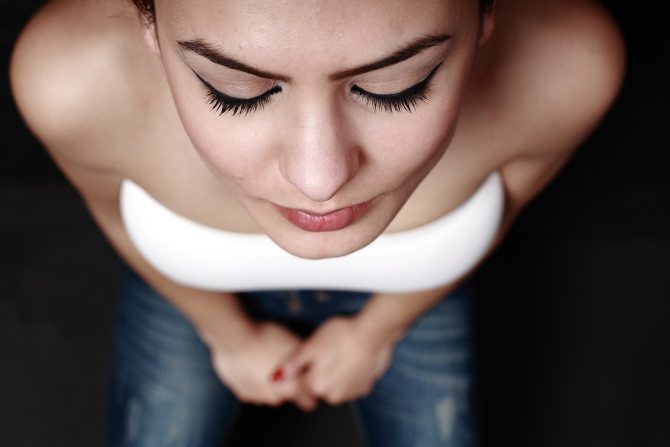
Preventive measures
How to protect yourself from such an unpleasant phenomenon as an allergy to eyelash extensions?
First of all, this procedure should only be carried out by a professional cosmetologist in a beauty salon, after making sure that he uses hypoallergenic materials. If a woman has ever experienced allergic reactions, she needs to tell the specialist about it. The room where the cosmetologist works should be well ventilated and moistened. Before the procedure, the master must put on gloves and a mask, and also treat the materials with special solutions to avoid infections. When working, the cosmetologist must be extremely careful to prevent damage to the eyelid or mucous membrane of the eye. It is better if he uses colorless glue during the procedure.
Fortunately, there are practically no contraindications for eyelash extensions. Even women who wear contact lenses can afford this procedure. Eyelash extensions are only undesirable for those who suffer from ophthalmological diseases, for example, acute or chronic inflammation of the connective membrane of the eyes.
“No, I won’t do extensions, I’m afraid of allergies. My friend had a terrible allergy to eyelash extensions - her red eyes and eyelids hurt for three days until the eyelashes were removed,” I heard this statement from one girl who later became my regular client. I then had to explain to her that her friend clearly did not have an allergy, since she complained of painful sensations. The reason for 99% was the low-quality, unprofessional work of the leshmaker.
The issue of allergies caused by extensions remains relevant among clients, and a lot of attention is paid to it on forums on the Internet. I decided to dispel the myths, tell you how an allergy differs from the consequences of improper extensions, advise how to avoid it and what to do if it occurs.
What is important to know?
Eyelash extensions are made from high-quality artificial hypoallergenic polymer. If a lash maker uses eyelashes from good, proven brands, the likelihood that they can cause a reaction is negligible. Any products and materials are also produced taking into account the requirement of hypoallergenicity. Most often, the reaction is caused by the glue that the lash maker uses to attach the artificial eyelash to the natural one.
If the correct extension technique is followed, the lash maker uses a small drop of glue, which only touches the eyelashes; the product should not come into contact with the skin of the eyelids. However, even with extensions according to all the rules, an allergic reaction cannot be ruled out.
How to minimize the risk of allergies?
A huge role for the result (appearance, comfort, eye health) is played by the professional level of the master and the materials he uses in his work. Most often, clients are allergic to cheap, low-quality glue, which good studios and beauty salons will never use. Therefore, the first important step to extension without any consequences is to get a service where they care about the safety of clients and the level of professionalism of lash makers is really high.
The second point is the individual reaction, which no one can predict. If you know about the sensitivity of your eyes and their predisposition to allergies, the best solution would be to conduct a preliminary test. Firstly, you can drop a little glue onto the skin on the bend of your arm, and secondly, to be sure, carry out a test extension. You can extend several eyelashes using all the materials used in the full procedure, then the risk will be completely eliminated.
The third point is to perform extensions only when your eyes are healthy. In case of inflammation, conjunctivitis of any nature and other diseases, postpone the procedure until complete recovery.
List of sources
- allergiya5.ru
- allergen.feedjc.org
- beautiful24.com
- DomKrasotki.ru
- optika-stil.ru
- limelady.ru
- allergich.com
